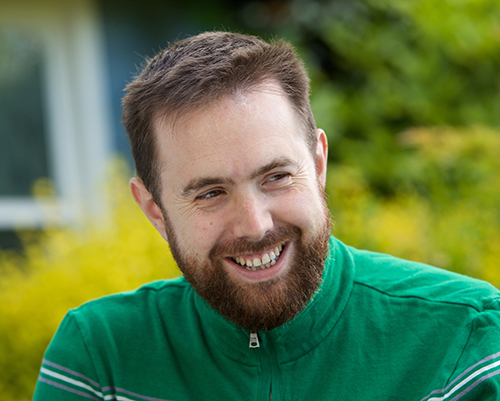 This fall HBO debuted a new documentary called Any One of Us that follows mountain biking star Paul Basagoitia in the wake of a 2015 bike crash that left him paralyzed. Using first person footage captured by Basagoitia and short interview segments with an array of familiar and unfamiliar SCI personalities, the movie aims to pull back the curtain and allow the millions of people who tune in to HBO for entertainment escapism a glimpse of the realities of spinal cord injury.
This fall HBO debuted a new documentary called Any One of Us that follows mountain biking star Paul Basagoitia in the wake of a 2015 bike crash that left him paralyzed. Using first person footage captured by Basagoitia and short interview segments with an array of familiar and unfamiliar SCI personalities, the movie aims to pull back the curtain and allow the millions of people who tune in to HBO for entertainment escapism a glimpse of the realities of spinal cord injury.
As a sucker for a good documentary, and someone with an obvious interest in anything and everything SCI-related, I was stoked to dig in, even if the movie poster’s lone image — Basagoitia standing with hand crutches in a desert and looking at his reflection in an oasis — had me a little leery.
If 30 years of New Mobility have proven anything, it’s that there is much more to life after SCI than trying to walk again. That’s not to downplay the importance of walking — it’s huge. Most of us would be thrilled to wake up tomorrow and go for a leisurely stroll in the park, but working to walk again is only a piece of a much more complicated puzzle of recovery.
Yet all too often, media portrayals get so lost in the easy (and ableist) “will he/she walk again” narrative that they forget the other pieces and leave their audience with an incomplete picture.
While Any One of Us is not without its strengths, most notably Basagoitia’s willingness to bare himself both physically and emotionally on camera and the insights of some of the interviewees, I couldn’t help but roll away feeling like it had missed an opportunity.
Since the poster shows Basagoitia standing, I’m not spoiling anything by saying he makes significant strides in his recovery. His steady progress, contrasted with his some¬times frustrating lack of awareness thereof, makes for compelling viewing.
In light of his regained function, Basagoitia’s decision to focus so intently on walking again makes sense. But the movie’s heavy focus on his progress, combined with some melodramatic editing and a few interviewees who come across as single-mindedly obsessed with getting back on their feet, comes with a cost.
Intended or not, these decisions have the effect of reinforcing the idea that in addition to the actual physical damage, a spinal cord injury leaves us broken people, and walking is the sole ticket to health and a truly happy life.
It’s disappointing because the antidote to that message is right there on screen in testimonials from the spinal-cord-injured talking heads interspersed throughout.
With years of experience under their belts, former Push Girl Chelsie Hill and surfer Jessie Billauer of Life Rolls On are two of the many wheelers who eloquently talk about their experiences after SCI and move the narrative beyond physical recovery and walking.
The short clips of Hill dancing with the Rollettes and Billauer riding a wave tease the wider world of SCI that so many of us inhabit — a more complex and, I would argue, more interesting world than the one that usually makes it onto the silver screen.
There’s a great documentary out there waiting to be made that will take people into this world and put all the pieces together. Until then, I’ll keep watching.
** This post was originally published on https://www.newmobility.com/2019/12/its-not-sci-its-hbo/

